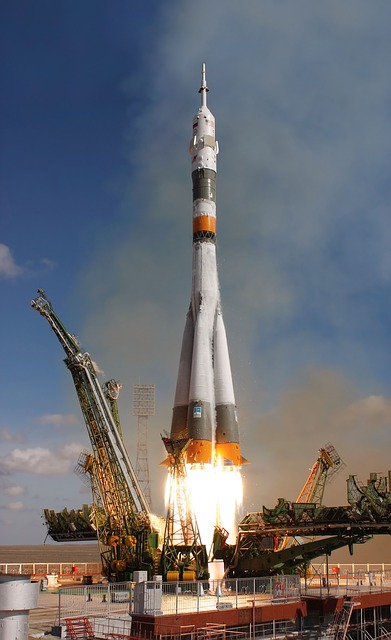
Announcement: We’ll be having a Google chat at 9pm EDT tomorrow (Thu 6/29); please consider joining! (Chat link)
We’re on week 3 of discussing The War on Science. If you’re just joining, feel free to dive in or catch up with the previous chapters (Ch 1-2, Ch 3-4). Author Shawn Otto continues his summary of United States history contributing to the present dynamics of public science discourse. Chapters 5 and 6 cover World War II to the present, right up to tweets from pre-candidacy Donald Trump, with particular emphasis on the experience of baby boomers.
Cars
Maybe because a sequel is current in theaters, or maybe because it was my son’s primary obsession for a couple of years, but these chapters reminded me of the movie Cars. The film is a love letter to Route 66 of the US Highway System and the culture of roaside towns which were disrupted by the construction of the Interstate Highway System. I have no nostalgia for those roads, so the films critique of interstates never connected with me. However, Otto’s discussion of the history of the interstate system gave me pause. I hadn’t appreciated the connection to evacuating metropolitan areas in the event of nuclear attack or the human cost of constructing them along the chosen routes. As someone who has used interstates around and through Baltimore and Pittsburgh for almost two decades, I’m realizing in hindsight that I should have been more sensitive to the reality of where those roads bisect neighborhoods and what might have existed before them. While not central to Otto’s argument, those historical details stood out to me.
I also found myself wondering about previous disruptions. The US Highway System that preceded the interstates did not always exist either; presumably it was similarly disruptive to some communities while being a boon to others. And the railroad networks before that disrupted a status quo also. I had similar thoughts about nuclear weapons, which Otto paints as weaponized science. Surely the mechanization of warfare during World War I was just as much an application of science to mass killing; this is a major theme of Tolkien’s The Lord of the Rings after all. Every gun is a product of science. While it is entirely plausible that nuclear bombs or interstates had the psychological effects Otto describes, a broader historical context might have been helpful. Did previous generations have similar reactions to contemporary disruptions? Was the experience of baby boomers and their parents different in scope, or simply the most recent and most proximal causally to the present day?
The other Cars connection was the discussion of the organic, back-to-nature movement. George Carlin’s hippy VW van Fillmore extols the virtues of all-natural motor oil and fuel, which earns him the good-natured scorn of Paul Dooley’s Army Jeep. In its own G-rated way, their dynamic represents a central theme of these chapters: the association of science, particularly applied science and technology, with the military-industrial complex and the resulting countercultural suspicion of anything industrial in favor of all things natural. And honestly, after reading the narrative Otto put together explaining how people came to have those suspicions, I found myself fairly sympathetic to their perspective. Otto himself seems to sympathize with different science-skeptical groups to varying degrees–vaccine abstainers get the least sympathy in these chapters–which makes me wonder if we could have benefited from a different title. Or is it just that Otto can empathize more with (one gathers fellow) liberals than he can with groups whose science concerns are religiously informed?

X-Men
My other pop culture touchstone for these chapters was the X-Men comics. The characters, superheroes who develop special abilities at puberty thanks to genetic mutations, first appeared in 1963. The X-Men didn’t have a common, shared origin, but eventually it was revealed that all of their parents separately had connections to atomic bomb research or nuclear power plants. Thus they had all been exposed to radiation through work, causing the mutations that gave their children powers. As a result, the X-Men were also known as the “Children of the Atom.”
Actually, many of the Marvel characters created in the 1960s reflect complicated attitudes towards science. Spider-man’s radioactive spider bite, the Fantastic Four’s cosmic ray exposure, Hulk’s gamma bomb, Daredevil’s industrial waste accident–all of these origin stories involve science out of control. Compare with the origin of Captain American in the 1940s; he is the intended positive outcome of a government science experiment. At the same time, what should be cautionary tales about exposure to lethally toxic substances are instead the inciting incidents for exciting adventures, bestowing extraordinary gifts on the heroes. Perhaps they represent a mixture of the sensibilities of the earlier generation–Jack Kirby and Stan Lee, architects of the 60s Marvel universe, were born in 1917 and 1922 respectively–and a desire to appeal to a baby boomer target audience?
Otto briefly mentions science fiction as an indicator of public perception of science. His main interest seems to be the way the space program served to inspire enthusiasm for space stories. I wonder if there might be more to explore in terms of how science fiction shaped public perception of science, rather than merely reflecting it. In discussing the “third culture” of individuals literate in both science and humanities, the emphasis is on scientists who venture into public communication. But what about those in the arts and humanities who built bridges to the sciences? Relatedly, Otto mentions the influx of European émigrés to Hollywood as a parallel development to émigrés populating the Manhattan Project. But science and filmmaking are much more closely connected, from the role of Edison in the early days of motion pictures to the shared history and cross-fertilization of Apple, Pixar and Lucasfilm. A broader view of how science intersects with arts and culture might make it easier to defuse the titular conflict.
Discussion Questions
- Otto describes science as fundamentally anti-authoritarian, only taking on a veneer of authority in the public eye in the post-war era. We’ve discussed a more authoritarian view of science previously; do you concur it is a recent and superficial development, or does it run more deeply?
- The ethics of using nuclear weapons is mentioned as an example of science outpacing the rest of society. How would you balance the unpredictable progress of scientific discovery with the need for ethical and political considerations of applying whatever we learn?
- These chapters feature a fair amount on the collective psychology of baby boomers. Do you think that kind of analysis is reasonable and appropriate in general? Do you think the assessment of baby boomers specifically is accurate?
- A distinction is made between policy decisions and the politics of public sentiment. Where do you see science and politics intersecting?
Andy has worn many hats in his life. He knows this is a dreadfully clichéd notion, but since it is also literally true he uses it anyway. Among his current metaphorical hats: husband of one wife, father of two teenagers, reader of science fiction and science fact, enthusiast of contemporary symphonic music, and chief science officer. Previous metaphorical hats include: comp bio postdoc, molecular biology grad student, InterVarsity chapter president (that one came with a literal hat), music store clerk, house painter, and mosquito trapper. Among his more unique literal hats: British bobby, captain’s hats (of varying levels of authenticity) of several specific vessels, a deerstalker from 221B Baker St, and a railroad engineer’s cap. His monthly Science in Review is drawn from his weekly Science Corner posts — Wednesdays, 8am (Eastern) on the Emerging Scholars Network Blog. His book Faith across the Multiverse is available from Hendrickson.

Leave a Reply